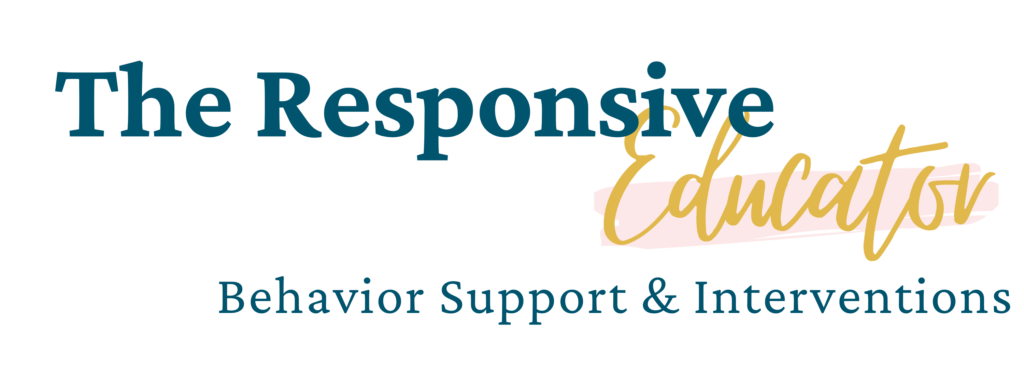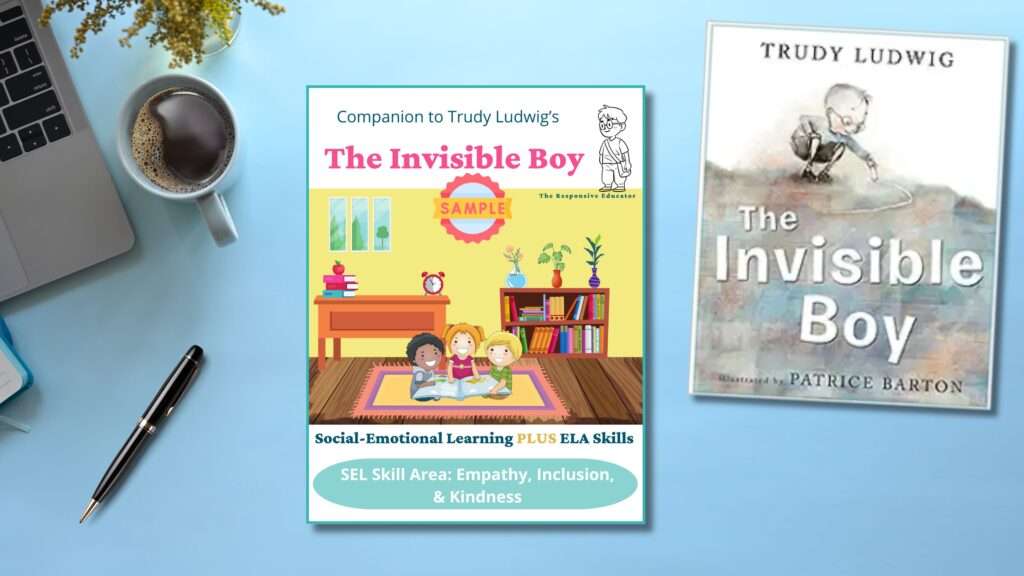


Young children are still learning how to manage big emotions—and sometimes, those feelings come out through hitting, kicking, biting, or other physical behaviors. While this is a normal part of early development, it’s important to teach toddlers and preschoolers that hurting others is not okay. These moments are opportunities to guide them toward safer, kinder ways to express themselves.
Books can be a powerful teaching tool in this process. The stories below help children understand why certain behaviors are hurtful and offer simple, age-appropriate strategies for handling frustration, anger, or sensory overwhelm. Whether you’re a parent, teacher, or caregiver, these books can support your efforts to build empathy, self-control, and safe habits—one gentle page at a time.
For some of the books on this website, I have created interactive read-alouds to enrich their use in the classroom. These interactive read-alouds include discussion questions, activities, and prompts that engage students and deepen their understanding of the book’s themes. More interactive read-alouds are on the way. If there are specific books for which you would like to see a read-aloud created, please contact me using the form at the bottom of the page.
To learn more about supporting social-emotional learning and using interactive read-alouds in the classroom, check out these posts:
(As an Amazon affiliate, I earn a small commission if you purchase products through the links on my posts. Thank you for your support!)
Summary: Feet Are Not for Kicking is a short and engaging teaching book designed to help toddlers and preschoolers understand that feet are for walking, jumping, and dancing—not for hurting others. With rhythmic language and warm, multicultural illustrations, the book models positive alternatives to aggressive behavior. Simple phrases like “Feet are not for kicking people—ouch! Kicking hurts!” make the message clear and repeatable for young children. This board book also includes a helpful section at the back for parents and caregivers with guidance on how to reinforce positive behavior.
Description: Part of the popular Best Behavior series, Feet Are Not for Kicking stands out for its proactive, positive framing. Rather than shaming children for acting out physically, it shows them what they can do with their bodies—kicking balls, jumping in leaves, dancing with joy. The repetitive, child-friendly language makes it easy to revisit during moments when physical aggression arises, and the short format ensures it’s manageable even during toddler meltdowns. While it’s a gentle introduction to behavior expectations, it does not delve deeply into emotional regulation or the reasons behind hitting or kicking—something to consider for children who may need help expressing frustration more constructively.
Reviews and Considerations: Parents, caregivers, and early childhood educators consistently praise this book for its clarity, repetition, and visual appeal. Many report seeing quick improvements in their toddlers’ behavior, especially when the book’s phrases are echoed during challenging moments. The illustrations help children connect their actions with others’ feelings, making it especially valuable for children who are still developing empathy or language skills. While some reviewers wished it went further in addressing the emotional triggers behind physical aggression, most found it to be an excellent foundation for teaching respectful behavior in simple, accessible terms. It’s a go-to read for families navigating the kicking phase and is often paired with Hands Are Not for Hitting and Teeth Are Not for Biting for a consistent behavioral message.

Summary: Hands Are Not for Hitting uses simple, direct language and vibrant illustrations to teach toddlers and preschoolers that hands are for helping, playing, creating—not for hurting others. This teaching book gently explains that while young children may feel big emotions, they can choose positive, loving actions instead of hitting. Available in both board book and paperback formats, it’s designed to meet the needs of children from ages 1 to 7, with an added section of tips for parents and caregivers to support consistent reinforcement.
Description: Part of the widely-used Best Behavior® series, Hands Are Not for Hitting has become a staple in homes, classrooms, and therapy settings. The book focuses on positive reinforcement by highlighting all the helpful and kind ways we can use our hands—like waving, building, or giving a hug—while also establishing a clear, calm message that hitting is not acceptable. Although the board book version is ideal for toddlers, it stays focused on behavioral direction rather than emotional reasoning, which may leave some readers looking for additional resources on managing anger or frustration. Still, its simplicity, repetition, and strong visual cues make it a valuable tool for redirecting unwanted behaviors in a non-shaming way.
Reviews and Considerations: Parents and teachers frequently note how this book becomes part of their daily language with children: phrases like “What are hands for?” and “Hands are not for hitting” are easily remembered and used in the moment. Many report noticeable reductions in hitting and greater understanding from toddlers who repeat the book’s language during conflicts. The illustrations are praised for their clarity and inclusivity, and the book’s durability makes it ideal for repeated readings. Some reviewers wished for more emphasis on the emotions that lead to hitting or suggestions for what to do instead when feeling mad, but nearly all agree it’s an essential foundational tool for early social-emotional learning.

Summary: In Little Dinos Don’t Hit, a strong and spirited young dinosaur learns that while he may have powerful arms, hitting is not an acceptable way to express himself. Instead, he discovers how to use his hands to help and show kindness. Designed for toddlers and preschoolers, this short and simple teaching book uses playful illustrations and direct language to reinforce the message that hands are not for hurting.
Description: This board book is part of Michael Dahl’s Little Dinos series, which includes titles like Little Dinos Don’t Push, Little Dinos Don’t Yell, Little Dinos Don’t Bite, and Little Dinos Don’t Bully. Each one tackles a different common toddler behavior with age-appropriate, straightforward guidance. Little Dinos Don’t Hit is especially effective for children who need a fast, repetitive reminder of positive actions—like hugging, helping, and high-fiving—instead of hitting. While some adults note the book focuses mostly on sibling and family interactions (e.g., “don’t hit your brother”), it still provides a useful framework that can be adapted for different home or classroom dynamics.
Reviews and Considerations: Caregivers praise this book’s brevity, clarity, and visual appeal—particularly for toddlers who struggle with self-regulation or limited language. Repetition of phrases like “hands are for helping” and the consistent dino theme make the book both memorable and appealing to young readers. Many families reported positive changes in behavior after adding the book to their daily routines, using the simple phrases from the story to redirect impulsive actions. While some wished for more inclusive scenarios beyond siblings or more emphasis on emotional expression, the book remains a go-to for introducing the concept of gentle hands in a fun, accessible way.
The Little Dinos books are also available in a bundle, making it easy to address multiple behaviors with a consistent and engaging format. With titles like Little Dinos Don’t Hit, Little Dinos Don’t Bite, Little Dinos Don’t Yell, Little Dinos Don’t Push, and Little Dinos Don’t Bully, this set provides a helpful foundation for teaching young children about boundaries, kindness, and self-control. If you’re working on more than one behavior, the bundle is a convenient and cost-effective way to support your child’s growth across different areas. Find the bundle here.

Summary: Written by a child psychologist, What to Do When You Feel Like Hitting goes beyond simple redirection and helps toddlers understand why they feel the urge to hit—and what to do instead. This teaching book uses clear, repetitive language and large, engaging illustrations to offer practical coping strategies. Each page introduces a new way to respond to frustration or anger, such as squeezing a stuffed animal, taking deep breaths, or asking for help, helping young children build emotional regulation skills in real time.
Description: This book stands out among no-hitting titles because it focuses on the emotional root of hitting behavior. Rather than just stating that hitting is wrong, it normalizes big feelings and empowers kids to express those feelings in safe, appropriate ways. It’s especially effective for children who need more than a quick reminder—they need a toolkit. While it’s a bit longer than some toddler board books, the structure (one coping skill per page) keeps kids engaged. It also includes a summary page and tips for caregivers, making it a strong choice for both home and classroom use.
Reviews and Considerations: Parents, caregivers, and professionals rave about this book’s effectiveness in real-world situations. Many shared that their children began using the strategies independently, even quoting lines from the book during moments of frustration. Reviewers appreciated the inclusive illustrations and the calm, respectful tone that doesn’t shame children for their feelings. Some found the repetitive phrasing (“when you feel like hitting…”) a bit overused, but most agreed that it reinforced the message in a developmentally appropriate way. It’s frequently described as more comprehensive and practical than other hitting books—particularly for toddlers with strong emotions, speech delays, or sensory needs.

Summary: Teeth Are Not for Biting tackles one of the most challenging toddler behaviors—biting—with calm, clear messaging and cheerful illustrations. This teaching book acknowledges the reasons why toddlers might bite—teething pain, frustration, fatigue, or sensory needs—while offering simple, repeatable phrases that reinforce the idea that “biting hurts.” With relatable scenarios and concrete alternatives like chewing a toy or asking for a hug, the book helps toddlers understand what to do instead.
Description: As part of the award-winning Best Behavior® series, this book combines straightforward text with warm illustrations that toddlers and caregivers can revisit again and again. Unlike some behavior books that only say “don’t,” this one focuses on the why behind the behavior and offers actionable, positive coping tools. It also includes a thoughtful parent section with guidance on how to manage biting episodes. Available in board book format for ages 1–4 and a longer version for older children, it’s designed to grow with your child’s needs.
Reviews and Considerations: Caregivers describe this book as a game-changer for managing biting behaviors. Many share stories of children quoting the book or asking for it when struggling with big feelings. The repetition, diverse illustrations, and practical strategies help toddlers internalize the message in a non-shaming way. While a few readers wished for a clearer distinction between “biting food” and “biting people,” most praised the book’s clarity and success in reducing biting over time. It’s a favorite in both homes and preschool classrooms—and often the first book parents recommend when biting becomes a concern.



Sign up now to receive a free sample of “The Invisible Boy” Interactive Read-Aloud Lesson Plan! This comprehensive resource includes engaging activities designed to help your students develop empathy and inclusion.
By signing up, you will also join our newsletter, where you’ll receive:
Join our community of educators dedicated to fostering social-emotional growth in the classroom!

( ) = Coming Soon
(Body Safety & Personal Boundaries)
(Bravery & Trying New Things)
(Conflict Resolution)
(Compromise / Cooperating)
(Coping with Change)
(Creativity & Imagination)
(Dreams & Aspirations)
(Dyslexia)
Feelings & Emotional Awareness
(Kindness & Generosity)
(Managing Physical Actions)
(Mindfulness)
(Organization & Planning)
(Peer Influence)
(Perseverance)
(Physical/Medical Disabilities)
(Positive Attitude)
(Sensory Processing)
(Separation Anxiety)
(Sharing)
(Speaking Politely)
(Teasing & Bullying)
(Technology)
(Trauma Recovery)
(Winning & Losing)